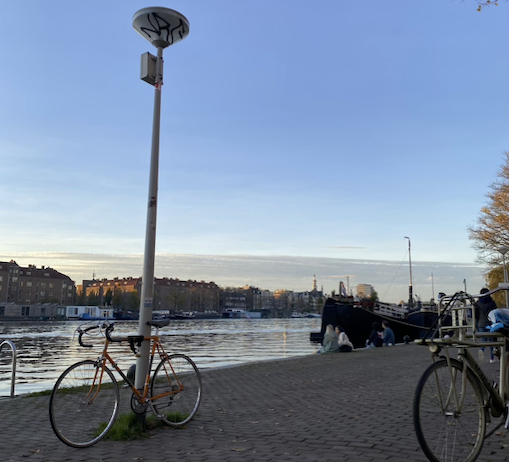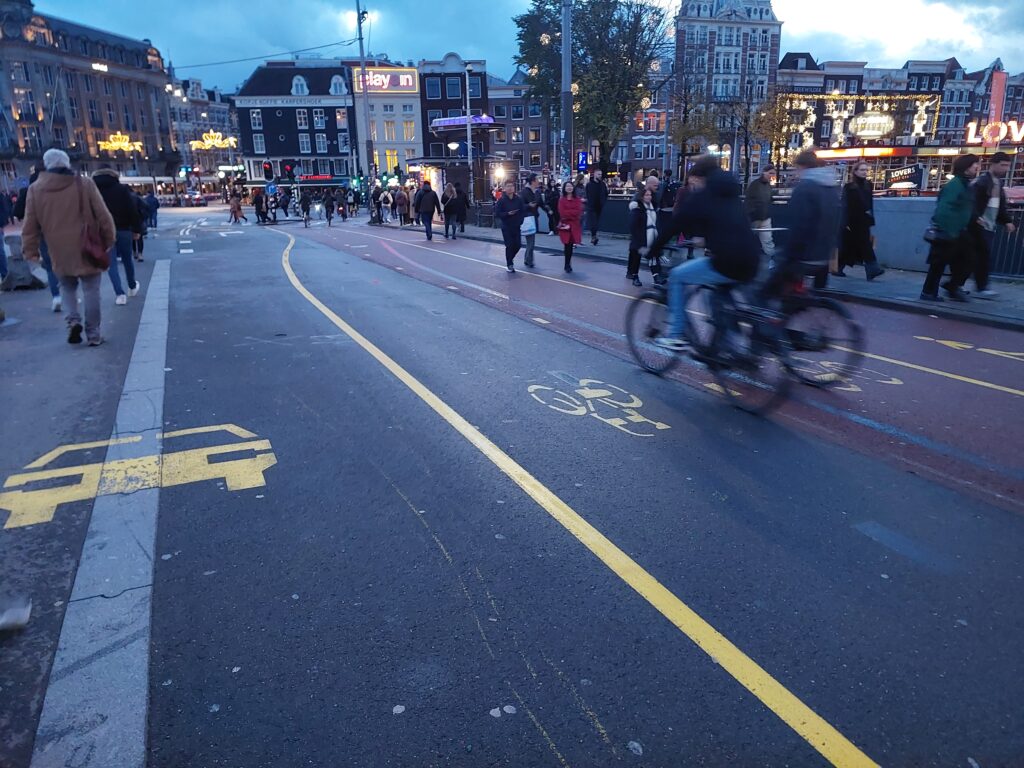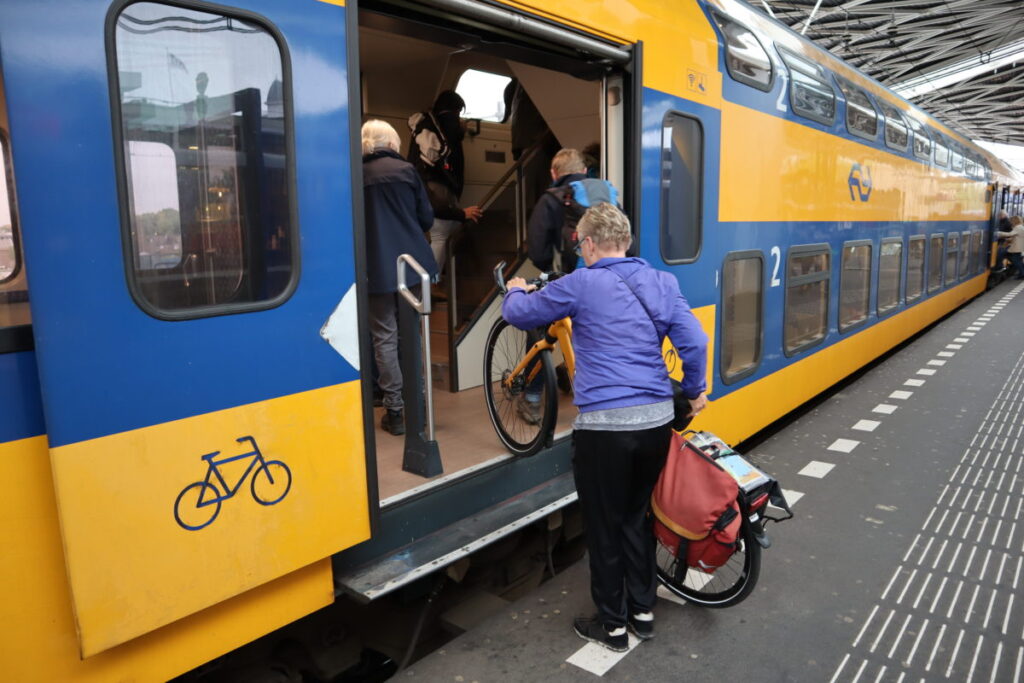Cycling in Cork, Ireland
Marie Hawkins | LinkedIn
Selected final essay, published 21st May 2023
Marie Hawkins is a City & Guilds certified Cycle Technician and is currently living in Cork, Ireland. She holds a Bachelors Degree in International Business from the University of Strasbourg, a BA of Hospitality Management from the University of Nantes, and is currently working toward a degree in History and Social Geography through the University of Bordeaux, while taking courses on cycling cities like “Unraveling the Cycling City” and urban planning offered by the University of Amsterdam. Marie is passionate about the promotion of sustainable transportation. She is volunteering locally with Cork Community Bikes and Sign and Cycle, advertising low-impact and eco-friendly bicycle repair.
Unravelling the Cycling City MOOC on Coursera
My family and I have moved to Cork, Ireland, 2 years ago. Since then, I have trained as a bicycle mechanic and volunteer actively in the community promoting cycling as a transit option for all age groups and social backgrounds. Alongside other volunteers, we upcycle used bicycles to donate or sell at low cost to marginalized communities or people who otherwise would not have the means to purchase one. Doing so, we hope to cut down on unnecessary waste as well as improve cycling accessibility for all in our city. Yet, it has come to my attention that we could be doing more and better with some extra knowledge. The Course “Unraveling the cycling city” (University of Amsterdam) has provided me with further insight on how to support alternative mobility solutions on the Dutch model in countries that have yet to implement such changes and on how to continue to support the changes that I believe can be happening from the ground up and at a community level.
In Ireland, where cycling history has left few marks in the urban landscape, most people choose the automobile as their preferred method of transportation. With its working-class background, cities such as Cork would have seen many cyclists once upon a time. This shows that Ireland, still part of the United Kingdom then, could have looked very similar to other European countries in the late 1800 when the bicycle started its journey, as described by Ruth Oldenziel and Adri Albert de la Bruhèze, in “Contested Spaces: Bicycle Lanes in Urban Europe, 1900–1995” (Ref 1). The website “Cycling Ireland” (Ref 2) mentions that “the first recorded cycling organisation was the Irish Champion Bicycle Club (ICBC) which was established in the 1870s.”
During the 20th century, the automobile became more and more popular and owning a car still is a social status symbol in this country nowadays. In the article “Making cycling irresistible: Lessons from the Netherlands, Denmark and Germany.” (Ref 3), the author confirms that while cycling is popular in some economically developed European countries like the Netherlands, residents of other countries such as the United States, Canada, UK, Australia, and Ireland hardly cycle at all.
Here in Cork, the infrastructure surrounding cycling is just starting to show itself after a long Covid-19 related lockdown. The Irish Examiner published an article in January 2021: “Pandemic leads to 35% surge in numbers cycling in Cork” (Ref 4) claiming that “the pandemic was a factor in driving a 35% surge in the number of people cycling in the Cork metropolitan region over the last year.” Yet, the Cork Cycling Campaign mentions that “while the strong growth pattern is consistent with mobility patterns in cities around the world, much of the exceptional growth was likely due to the Covid-19 pandemic, and in response to public health advice from the Government and the WHO to walk and cycle wherever possible.”
So now, almost two years after the start of the pandemic, we do see an increase of cycling infrastructure in Cork to accommodate for this overall growth in cycling. Unfortunately, most bike lanes follow leisure routes and are not practical for commuters. This leads me to think that there is a consistent lack of research being done on cycling patterns and needs in this city.
On this very topic, interesting ideas are being brought up in “Towards a pattern language for cycling environments: merging variables and narratives” (Ref 5): “How can we properly describe, analyse and predict a fitting context for urban cycling?”. Using a pattern language to address the multiple characteristics of cycling contexts could be the foundation of new research and certainly would benefit countries where infrastructures and urban planning fit poorly to the realities of cycling in an urban environment.
What if we did not have to sit in traffic on our way to work or dropping our children off to school? Cities like Cork have not been built to cater for the increase of population it is seeing today. The Irish Examiner published an article back in 2019 announcing that “The city is on track to be the fastest growing in Ireland for the next 20 years.” (Ref 6). Population growth can be a good thing, for the economy, for the communities, but not for traffic and consequently, if “more humans” means “more cars”, not for the environment.
The next step in planning for a car free landscape in this city would be to create a connected system that allows commuters to use public transit in association with the bicycle to travel longer distances, as presented in “Synergies from improved bicycle-transit integration” (Ref 7). Thus, commuters would not be stuck in traffic, frustrated and isolated and could be closer to the world around. Cycling allows proximity with one’s environment and community, as seen in the video “Why We Cycle?” (Ref 8), which is something the automobile does not provide. To summarize, cycling is not only a greener method of transportation but can also benefit your physical and mental health.

Having a young child and cycling to school with him everyday (on sidewalks mainly) in a place where cycling is comparable to swimming against the current, is a reminder on how streets have been taken over by the automobile and freedom of movement is restricted. Still, watching how independent and happy it makes my son to be capable to take himself to school at the age of 5, able to stop to look at bugs or to chat away with me or with friends on the way there, gives me confidence. As we deal with massive population growth, global warming and social isolation, cars are becoming more and more obsolete or simply irrelevant. The habit of caring for motorized vehicle access is keeping us from working towards a healthier sustainable future and greener safer cities. So, what are we going to do about it? The major protests and demonstrations in the Netherlands in the late 1970s (as seen in the video “How the Dutch got their cycle paths”) led this country to have the highest cycling rates in the world today (Figure 1). If the Dutch example has taught us anything is that the power of change lies in our hands. I strongly believe it is time to reclaim the streets for our children and for all members of society in an inclusive, connected and environmentally conscious network.
Sources
- Oldenziel, Ruth, and Adri A. de la Bruhèze. “Contested Spaces: Bicycle Lanes in Urban Europe, 1900-1995.” Transfers 1, no. 2 (2011): 31-4
- “Cycling Ireland, A Brief History of Cycling in Ireland. Cycling Ireland is affiliated to the European Cycling Union (UEC) and the International Cycling Union (UCI) and is the Internationally recognised body for the control of cycling throughout the whole island of Ireland.
- Pucher, J., & Buehler, R. (2008) “Making cycling irresistible: Lessons from the Netherlands, Denmark and Germany.”
- Eoin English, Irish Examiner “Pandemic leads to 35% surge in numbers cycling in Cork”, Sat, 09 Jan, 2021
- te Brömmelstroet, M., Nello-Deakin, S., Quillien, J., & Bhattacharya, I. (2018). Towards a pattern language for cycling environments: merging variables and narratives. Applied Mobilities.
- Simon Coveney, Irish Examiner “Cork on the Rise: Cork on track to be the fastest growing city in Ireland for the next 20 years” Mon, 29 Apr, 2019
- Kager, R., & Harms, L. (2017). Synergies from improved bicycle-transit integration Towards an integrated urban mobility system. International Transport Forum.
- “Why We Cycle” 2020, Gertjan Hulster – Arne Gielen – Marco te Brömmelstroet – Jeroen Dirks
- Mark Wagenbuur, Bicycle Dutch: “Why We Cycle” 2011



